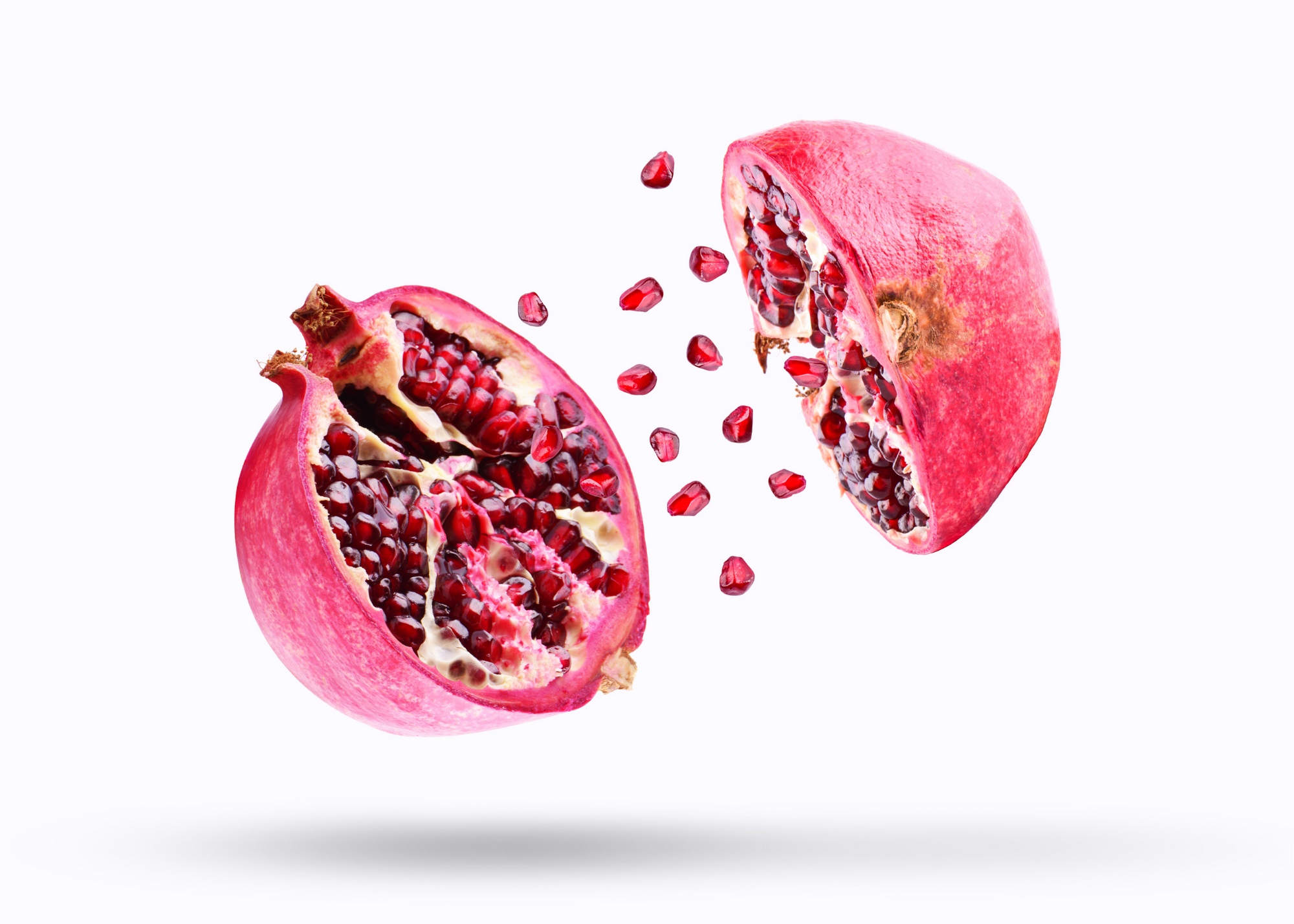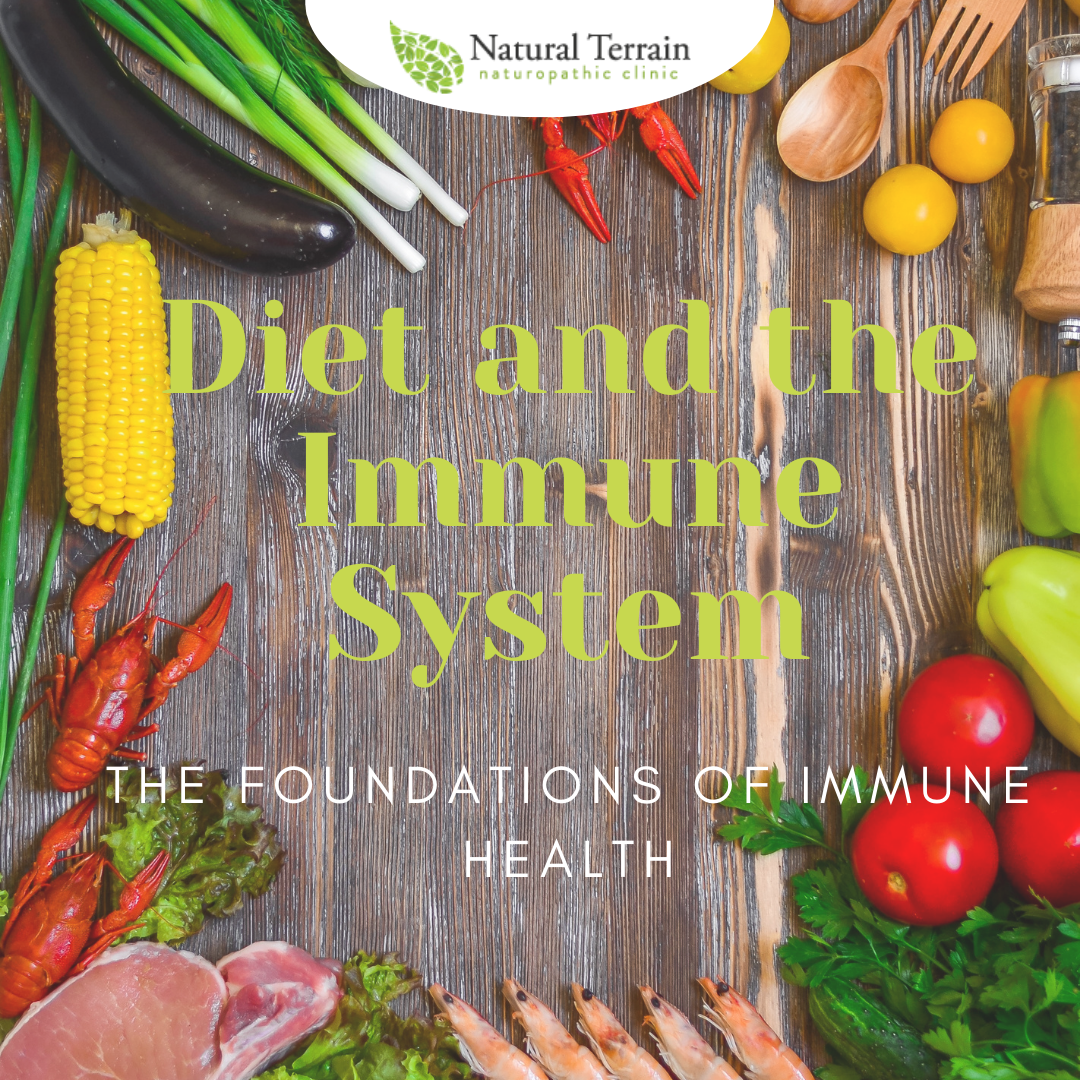
Pomegranates not only taste great, but they also have lots of medicinal benefits.
The composition of pomegranates is quite unique, being composed as a mixture of different bioactive compounds. The high levels of bioflavonoids, ellagitannins, catechins and anthocyanins give powerful health benefits to pomegranates.
The Benefits of Pomegranates
Here are 5 benefits of this powerful fruit:
- Pomegranates are loaded with nutrients. Pomegranates are high in vitamin C, potassium, fibre, vitamin K and folate. These nutrients are needed for the body to carry out regular functions, like digestion, breathing and preventing illness.
- Pomegranates may prevent and be used to help treat certain cancers. Some primary research suggests that pomegranates may help prevent cancer development and slow down the spread of cancer, particularly prostate, breast, skin, lung and colon cancers.
- It lowers blood pressure. Pomegranates are considered anti-hypertensives meaning that they can reduce blood pressure. Studies have shown that drinking 1 cup a day of pomegranate juice can reduce both systolic and diastolic blood pressure. We love Pom juice! Available at local grocery stores.
- It is anti-inflammatory. Pomegranates are great at reducing inflammation. They have been studied in a number of different inflammatory diseases such as rheumatoid arthritis, inflammatory bowel disease and cardiovascular disease.
- Pomegranates may help with depression. Pomegranate juice contains phytochemical compounds that stimulate serotonin and estrogen receptors, improving symptoms of depression and increasing bone mass in lab animals
The De-Seeding Technique
Taking the seeds out of a pomegranate is no easy task. It can be a messy, sticky scene. When we eat a pomegranate this way, we lose out on some of the nutrition that is in the pomegranate juice.
Luckily, Dr. Mason-Wood ND has a trick for getting pomegranate seeds out while preserving the juiciness and reducing the mess. Cut the pomegranate in half, put the cut half face down into your palm and fingers. Hold your hand over a large bowl. Then, take a wooden spoon and hit the back of the pomegranate. The seeds should fall out of the pomegranate, through your fingers and into the bowl.
Watch the video to see Dr. Mason-Wood’s ND trick for pomegranates in action.
Pomegranate Recipe Ideas

Because pomegranate seeds are so small, they are easy to add to a number of different dishes. Two of the easiest ways is to throw it into your favourite salad for a burst of flavour or add it to your smoothie. Here are 3 dishes we are excited to try.
Turkey Tacos with Pear Pomegranate Salsa Taco
Adapted from Ali Martin’s Pear Pomegranate Salsa and Dr. Chris Bjorndal ND in The Essential Diet: Eating for your Mental Health.
INGREDIENT:
Pear Pomegranate Salsa
-
-
- 2 fresh pears (any kind), cored and diced
- 1 fresh pomegranate, seeded
- half a red onion, diced
- 1/2 cup chopped fresh cilantro leaves
- juice of half a lime
-
Jack’s Taco Seasoning
-
-
- 1 tsp ground cumin
- 1 tsp ground oregano
- 1⁄2 tsp onion powder
- 1⁄2 tsp garlic powder
- 1⁄2 tsp paprika
- 1⁄4 to 1⁄2 tsp cayenne pepper (ground) 1⁄4 to 1⁄2 tsp cayenne pepper flakes
-
Turkey filling
-
-
- 1 tsp olive oil
- 1 lb. ground lean turkey
- ¼ cup crumbled cotija cheese
- 3⁄4 C water
- Whole-wheat tortillas
- Optional: fresh lime wedges, extra chopped fresh cilantro, sour cream, diced scallions, and tomatoes.
-
DIRECTIONS:
-
- Make the seasoning by tossing all the ingredients together
- Make the salsa. Toss the pears, pomegranates, red onion, cilantro leaves and lime together until combined. Season to taste with salt and pepper.
- Heat the olive oil in a large skillet over medium-high heat. Break up the ground turkey into small pieces and cook thoroughly (5 minutes). Drain the fat and reduce the heat. Add the taco seasoning mix and water, then stir to blend the spices with the meat. Reduce the heat to simmer.
- Lay one tortilla out on a serving plate. Place a few slices of turkey in a line down the center of the tortilla. Then add a few spoonfuls of salsa and a sprinkle of cotija cheese on top of the Turkey. Serve immediately.
Pomegranate and Orange Salmon from Taste of Home
Taken from https://www.tasteofhome.com/recipes/orange-pomegranate-salmon/
INGREDIENTS:
-
-
- 1 small red onion, thinly sliced
- 1 skinned salmon fillet (about 2 pounds)
- 1/2 teaspoon salt
- 1 medium navel orange, thinly sliced
- 1 cup pomegranate seeds
- 2 tablespoons extra virgin olive oil
- 1 tablespoon minced fresh dill
-
DIRECTIONS:
-
-
- Preheat oven to 375°. Place a 28×18-in. piece of heavy-duty foil in a 15x10x1-in. baking pan. Place onion slices in a single layer on foil. Top with salmon; sprinkle with salt. Arrange orange slices over top. Sprinkle with pomegranate seeds; drizzle with oil. Top with a second piece of foil. Bring edges of foil together on all sides and crimp to seal, forming a large packet.
- Bake until fish just begins to flake easily with a fork, about 25-30 minutes. Be careful of escaping steam when opening packet. Remove to a serving platter; sprinkle with dill.
-
Pomegranate & Pear Green Salad with Ginger Dressing by Cookies and Kate
Taken from Cookies and Kate
INGREDIENTS:
Salad
-
-
- ½ cup raw pecans (halves or pieces)
- 5 ounces baby arugula
- 2 ounces (about ½ cup) goat cheese or feta, crumbled
- 1 large ripe Bartlett pear, thinly sliced
- 1 Honeycrisp or Gala apple, thinly sliced
- Arils from 1 pomegranate
-
Ginger dressing
-
-
- ¼ cup extra-virgin olive oil
- 1 tablespoon apple cider vinegar, to taste
- 1 tablespoon Dijon mustard
- 1 tablespoon maple syrup or honey
- 1 teaspoon finely grated fresh ginger
- ¼ teaspoon fine sea salt
- About 10 twists of freshly ground black pepper
-
DIRECTIONS:
- To toast the pecans, place them in a skillet over medium heat. Toast, stirring often, until they’re fragrant and starting to turn golden on the edges, about 4 to 5 minutes. Remove the pecans from the heat and roughly chop them (no need to chop if you started with pecan pieces). Set aside.
- Arrange the arugula across a large serving platter (or bowl, but the salad looks prettiest on a platter). Sprinkle the chopped pecans and crumbled goat cheese over the arugula. Fan out your slices of pear and apple and arrange them across the salad in sections (see photos). Sprinkle all over with fresh pomegranate seeds.
- To prepare the dressing, combine all of the ingredients and whisk until blended. Taste, and if it isn’t quite zippy enough, add another teaspoon of vinegar.
- Wait to dress the salad until you’re ready to serve (the dressing will wilt the greens over time). When you’re ready, drizzle the ginger dressing lightly all over the salad (you might not need all of it). Serve promptly.
References
https://nutritiondata.self.com/facts/fruits-and-fruit-juices/2038/2

 Vegetables are dense in nutrients. They can help provide your body with different vitamins and minerals. Fruits and vegetables have antioxidant properties which help to reduce damage to our cells and optimize the immune system. Almost all vegetables and fruit have benefits to the immune system. Some examples of particularly great immune supporting fruits and vegetables are; berries, spinach, citrus fruits such as oranges, grapefruits, lemons and limes and cruciferous vegetables, such as broccoli, cauliflower, Brussel sprouts, cabbage and arugula.
Vegetables are dense in nutrients. They can help provide your body with different vitamins and minerals. Fruits and vegetables have antioxidant properties which help to reduce damage to our cells and optimize the immune system. Almost all vegetables and fruit have benefits to the immune system. Some examples of particularly great immune supporting fruits and vegetables are; berries, spinach, citrus fruits such as oranges, grapefruits, lemons and limes and cruciferous vegetables, such as broccoli, cauliflower, Brussel sprouts, cabbage and arugula. There are a lot of great spices out that don’t just add a bunch of flavour to your meals, but they also have immune-supporting effects. Garlic has a lot of antimicrobial properties that assists the immune system in preventing you from getting sick. Turmeric is highly anti-inflammatory and is a good antioxidant. Ginger is also good for bringing down the inflammation. These foods will help to improve your immune function. Try adding at least one to every meal.
There are a lot of great spices out that don’t just add a bunch of flavour to your meals, but they also have immune-supporting effects. Garlic has a lot of antimicrobial properties that assists the immune system in preventing you from getting sick. Turmeric is highly anti-inflammatory and is a good antioxidant. Ginger is also good for bringing down the inflammation. These foods will help to improve your immune function. Try adding at least one to every meal.